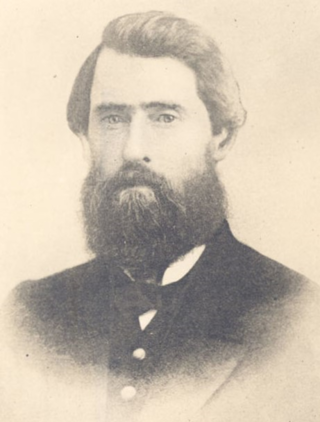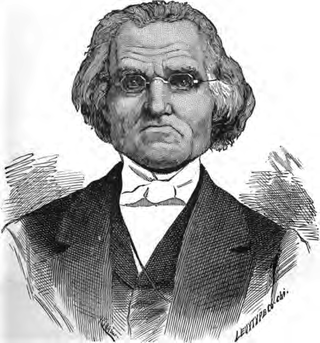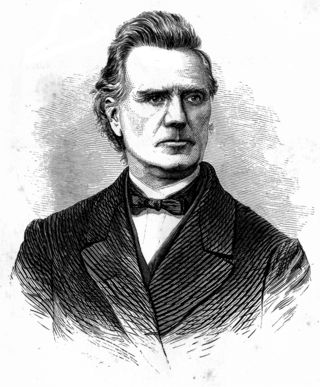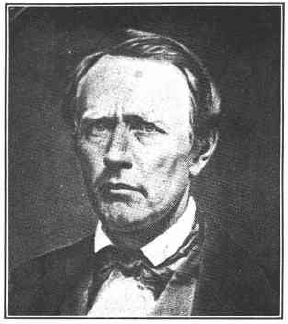Related Research Articles
The Oregon missionaries were pioneers who settled in the Oregon Country of North America starting in the 1830s dedicated to bringing Christianity to local Native Americans. There had been missionary efforts prior to this, such as those sponsored by the Northwest Company with missionaries from the Church of England starting in 1819. The Foreign Mission movement was already 15 years underway by 1820, but it was difficult to find missionaries willing to go to Oregon, as many wanted to go to the east, to India or China. It was not until the 1830s, when a schoolmaster from Connecticut, Hall Jackson Kelley, created his "American Society for the Settlement of the Oregon Country," that more interest and support for Oregon missionaries grew. Around the same time, four Nez Perce arrived in St. Louis in the fall of 1831, with accounts differencing as to if these travelers were asking for “the book of life,” an idea used by Protestant missionaries, or if they asked for “Blackrobes,” meaning Jesuits, thus Catholic missionaries. Either way this inspired Christian missionaries to travel to the Oregon Territory. Oregon missionaries played a political role, as well as a religious one, as their missions established US political power in an area in which the Hudson’s Bay Company, operating under the British government, maintained a political interest in the Oregon country. Such missionaries had an influential impact on the early settlement of the region, establishing institutions that became the foundation of United States settlement of the Pacific Northwest.

Jason Lee was a Canadian Methodist Episcopalian missionary and pioneer in the Pacific Northwest. He was born on a farm near Stanstead, Quebec.

George Abernethy was an American politician, pioneer, notable entrepreneur, and first governor of Oregon under the provisional government based in the Willamette Valley, an area later a part of the American state of Oregon. He traveled to Oregon Country as a secular member of the Methodist mission, where he became involved in politics and helped found the first American newspaper west of the Rocky Mountains.

Willamette Heritage Center is a museum in Salem, Oregon. The five-acre site features several structures listed on the National Register of Historic Places including the Thomas Kay woolen mill, the Jason Lee House, Methodist Parsonage, John D. Boon House, the Pleasant Grove (Condit) Church. The houses and church were relocated to the mill site. The Center also includes a research library and archives of Marion County history.
Clement Daniel Rockey was a bishop of the Methodist Church, elected in 1941.
Alanson Beers was an American pioneer and politician in the early days of the settlement of the Oregon Country. A blacksmith by trade, he was a reinforcement for the Methodist Mission in what would become the state of Oregon. The Connecticut native helped found the Oregon Institute and participated in the Champoeg Meetings where he was elected to serve on the Executive Committee in 1843.

The Oregon Institute was an American school located in the Willamette Valley of the Oregon Country during the 19th century. Begun in 1842, it was the first school built for European Americans west of Missouri. Founded by members of the Methodist Mission, it was located in what is now Salem, Oregon. The school began as a pre-college institution, but by 1853 was developed as Willamette University. The school's three-story building was a prominent feature in the early days of Oregon; it served as a meeting place for the Oregon Territorial Legislature when it first moved to Salem.

Doctor Ira Leonard Babcock was an American pioneer and doctor in the Oregon Country. A native of New York, he was selected as the first Supreme Judge with probate powers in February 1841 in what would become the state of Oregon.
The Methodist Mission was the Methodist Episcopal Church's 19th-century conversion efforts in the Pacific Northwest. Local Indigenous cultures were introduced to western culture and Christianity. Superintendent Jason Lee was the principal leader for almost a decade. It was a political and religious effort. Two years after the mission began, the church's Board of Foreign Missions described its intent to reclaim "these wandering savages, who are in a very degraded state, to the blessings of Christianity and civilized life." Alongside the missions founded in the region were several secular operations opened. These were maintained to allow for material independence from the Hudson's Bay Company (HBC), then the preeminent economic entity in the region among European descendants.

David Leslie was an American missionary and pioneer in what became the state of Oregon. A native of New Hampshire, he joined Jason Lee as a missionary at the Methodist Mission in the Oregon Country in 1836. In that region he participated in the early movement to start a government and his home was used for some of these meetings. With the closing of the mission he became a founder of the city of Salem, Oregon, and board member of the Oregon Institute, which later became Willamette University.

Reverend Gustavus Hines was an American missionary in Oregon Country. Working for the Methodist Mission in what became the state of Oregon, the New York native became involved in early attempts to form a government at the Champoeg Meetings in 1841. Later he served on the board of trustees for the Oregon Institute, which became Willamette University, and wrote several books on Oregon.

William Holden Willson was a pioneer of the U.S. state of Oregon and the founder of its capital city, Salem. A native of New Hampshire, he immigrated to the Oregon Country in 1837 to work at the Methodist Mission, and there would participate in the Champoeg Meetings. Willson served as the first treasurer of the Provisional Government of Oregon.

Reverend Josiah Lamberson Parrish was an American missionary in the Pacific Northwest and trustee of the Oregon Institute at its founding. A native of New York, he also participated in the Champoeg Meetings that led to the formation of the Provisional Government of Oregon in 1843. Parrish was married three times and was the first breeder of pure-bred sheep in Oregon.

Alvin F. Waller (1808–1872) was an American missionary in Oregon Country and an early leader at Willamette University in Salem, Oregon. He was a native of Pennsylvania and helped found the first Protestant church west of the Rocky Mountains in 1843 in Oregon City.
Henry A. G. Lee was a soldier and politician in Oregon Country in the 1840s. A member of Virginia's Lee family, he was part of the Fremont Expedition and commanded troops during the Cayuse War in what became the Oregon Territory. He also was a member of the Oregon Provisional Government and the second editor of the Oregon Spectator.
Dr. Elijah White (1806–1879) was a missionary and agent for the United States government in Oregon Country during the mid-19th century. A trained physician from New York State, he first traveled to Oregon as part of the Methodist Mission in the Willamette Valley. He returned to the region after a falling-out with mission leader Jason Lee as the leader of one of the first large wagon trains across the Oregon Trail and as a sub-Indian agent of the federal government. In Oregon he used his authority to regulate affairs between the Natives and settlers, and even between settlers. White left the region in 1845 as a messenger for the Provisional Government of Oregon to the United States Congress, returning in 1850 before leaving again for California in the early 1860s.

Willamette Mission State Park is a state park in the U.S. state of Oregon, located about four miles (6 km) north of Keizer adjacent to the Wheatland Ferry and east of the Willamette River. It includes Willamette Station Site, Methodist Mission in Oregon, which is listed by the National Register of Historic Places.
The Wascopam Mission or Dalles Mission was a branch of the Methodist Mission active in the Pacific Northwest. It was the first post established outside the Willamette Valley, opened at Celilo Falls along the Columbia River on March 21, 1838, by Reverends Daniel Lee and Henry K. W. Perkins.
Joseph Hasbrouck Frost was an American Methodist Episcopalian missionary in the Pacific Northwest.
John Plastis Richmond was an American Methodist Episcopalian priest and politician who served in New York, Illinois, Mississippi, the Pacific Northwest, and South Dakota during the 19th century.